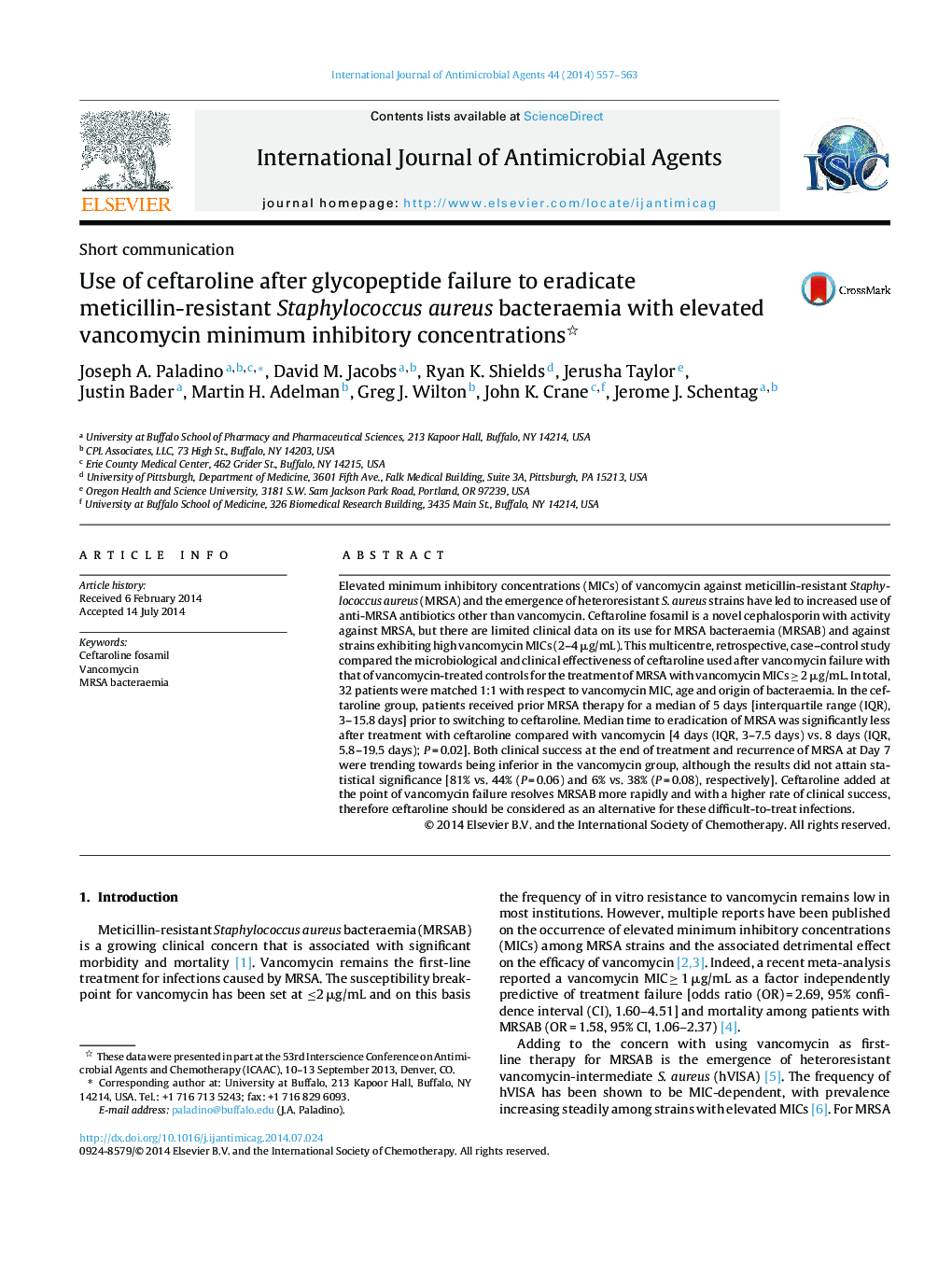| Article ID | Journal | Published Year | Pages | File Type |
|---|---|---|---|---|
| 3358775 | International Journal of Antimicrobial Agents | 2014 | 7 Pages |
•Thirty-two patients were matched 1:1 with respect to vancomycin MIC, age and origin of bacteraemia.•Time to eradication of MRSA was significantly less after treatment with ceftaroline compared to vancomycin (4 days vs. 8 days, P = 0.02).•Clinical success and recurrence of MRSA at day 7 were trending towards being inferior in the vancomycin group, although the results did not attain statistical significance.•Ceftaroline added at the point of vancomycin failure resolves MRSA bacteraemia more rapidly and with a higher rate of clinical success.
Elevated minimum inhibitory concentrations (MICs) of vancomycin against meticillin-resistant Staphylococcus aureus (MRSA) and the emergence of heteroresistant S. aureus strains have led to increased use of anti-MRSA antibiotics other than vancomycin. Ceftaroline fosamil is a novel cephalosporin with activity against MRSA, but there are limited clinical data on its use for MRSA bacteraemia (MRSAB) and against strains exhibiting high vancomycin MICs (2–4 μg/mL). This multicentre, retrospective, case–control study compared the microbiological and clinical effectiveness of ceftaroline used after vancomycin failure with that of vancomycin-treated controls for the treatment of MRSA with vancomycin MICs ≥ 2 μg/mL. In total, 32 patients were matched 1:1 with respect to vancomycin MIC, age and origin of bacteraemia. In the ceftaroline group, patients received prior MRSA therapy for a median of 5 days [interquartile range (IQR), 3–15.8 days] prior to switching to ceftaroline. Median time to eradication of MRSA was significantly less after treatment with ceftaroline compared with vancomycin [4 days (IQR, 3–7.5 days) vs. 8 days (IQR, 5.8–19.5 days); P = 0.02]. Both clinical success at the end of treatment and recurrence of MRSA at Day 7 were trending towards being inferior in the vancomycin group, although the results did not attain statistical significance [81% vs. 44% (P = 0.06) and 6% vs. 38% (P = 0.08), respectively]. Ceftaroline added at the point of vancomycin failure resolves MRSAB more rapidly and with a higher rate of clinical success, therefore ceftaroline should be considered as an alternative for these difficult-to-treat infections.
